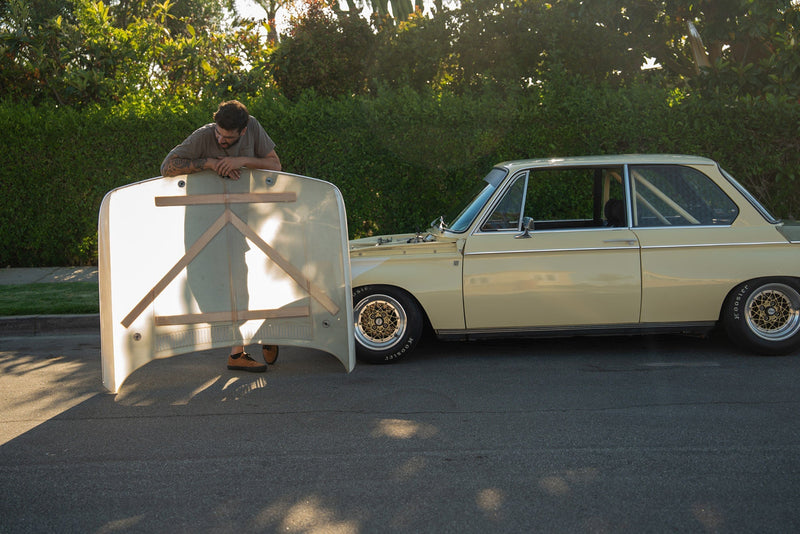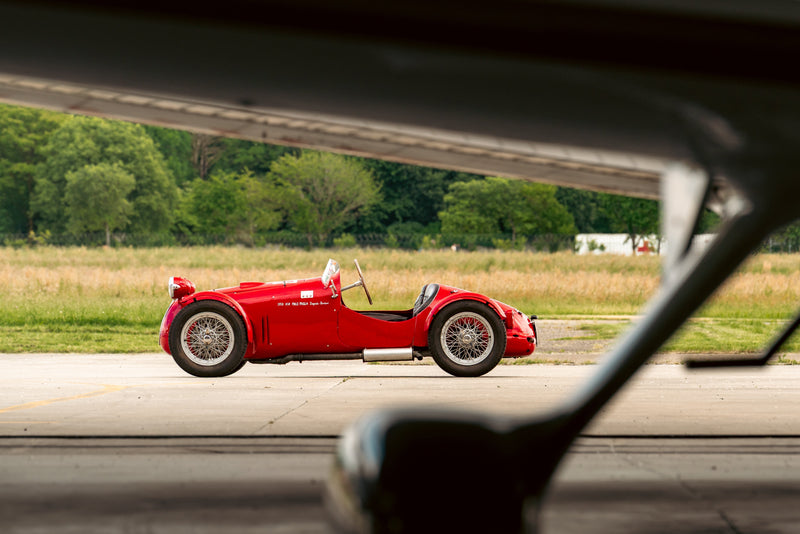The old saying goes, "nothing exceeds like excess" and nothing could be more true than the ‘Harley Earl’ era of American Auto. In my experience, when you speak to car enthusiasts worldwide, there’s one era that unites everyone in admiration: 1950s auto Americana. It’s the shapes, the fins, the chrome, and the ideals that the American way of life stood for; also the obsession with aerodynamics without actually having much in the way of hard science behind it. These cars became objects that embodied the American Dream in the post-war boom of affluence and indeed, signified to the world that in America, anything seemed possible, with many of these iconic designs developed by Mr. Harley Earl.
Harley is widely considered to be the father of modern automotive design and under his guidance, GM was the first American carmaker to open an ‘Art and Color Section’ (a dedicated, in-house design studio). He didn’t just influence GM’s design language from the 1930s through to the 1950s, but also structured a formal process of design that would eventually be adopted by all American and many foreign carmakers.

Born in Hollywood, California on 22 November 1893, his father, J. W. Earl began work as a coachbuilder in 1889 and eventually changed his practice from horse-drawn vehicles to customized bodies, parts and accessories for autos, founding ‘Earl Automobile Works’ in 1908.
Harley went to college at Stanford, but left prematurely to work with his father in the family business. By this time, the shop was building custom bodies for numerous Hollywood movie stars where his work was noticed by the Director of GM, Mr. Alfred P. Sloan Jr. who in 1926, invited Harley to Detroit as a consultant and eventually hired him to head up GM's newly devised Art & Color Section. Never before had a major car manufacturer set up a separate section for the development of the ‘glamour’ aspect in the production of its vehicles.
It’s also worth crediting Harley, or Misterl as he was also known, (and Alfred) for implementing 'Dynamic Obsolescence' (essentially synonymous with planned obsolescence) and the 'Annual Model Change' (tying model identity to a specific year). These ideas are largely taken for granted today but were quite unusual at the time.
His styling genius is perhaps lesser known for actually developing the world’s first ever concept car, the 1938 Buick 'Y-Job' which set the car community in a frenzy. Harley repeated the concept magic 13 years later when he created the '51 Buick LeSabre. Loaded with technology, the LeSabre looked like a futuristic jet fighter with an all-aluminum, 335hp supercharged V-8 that burned a mixture of methanol and gasoline. Rubberized 20-gallon fuel tanks were located in each tail fin-one for gasoline, the other for the methyl alcohol that was used during wide-open-throttle bursts.

In September 1951, Harley took the LeSabre to the Watkins Glen sports-car race where he was impressed not only with the Jaguars, Ferraris, and Alfas, but also with the passion these marques' enthusiasts had for their cars. Drawing influence from these European sports cars being raced on road circuits after WWII, Misterl decided that General Motors needed to make a sports car and since conception, the Corvette is still the flagship and benchmark for American performance. Starting out as secret ‘Project Opel’, Harley first offered the project to Chevrolet general manager Ed Cole who accepted the project without hesitation, with the ‘Vette going on sale in 1953.
Miserl’s most enduring design detail is arguably the tailfin, a look that became an icon of the '50s. Harley authorized the Frank Hershey design for the 1948 Cadillac, which incorporated the first automotive tailfin with inspiration for the fins allegedly coming from the Lockheed P-38 Lightning, but extended beyond the war during the age when space rockets captured popular imagination (1950s and '60s). The style caught on throughout Detroit and eventually led to competition between Harley and Mr. Virgil Exner (at Chrysler) over the size and complexity of tailfins, ultimately peaking with those on the iconic 1959 Cadillac models.
In December 1958, when General Motors was the largest corporation in the world, Harley reached GM's mandatory retirement age of 65 and thus retired from his position as chief stylist after overseeing the design of the 1959 models. He was succeeded as vice-president with responsibility for the Design and Styling Department by Mr. Bill Mitchell, under whose leadership GM design became less ornamental and voluptuous.
Earl died, aged 75, in West Palm Beach, Florida on April 10, 1969, suffering a stroke, leaving behind a universally adored legacy.

Image Sources: automobilesdeluxe.tv, flickrhivemind.net, blog.hemmings.com, web-cars.com, ebay.com, paintref.com, kustomrama.com, carstyling.ru, oobject.com, blog.hemmings.com, blog.hemmings.com, carnewscafe.com, carnewscafe.com




















































